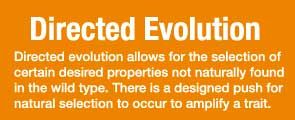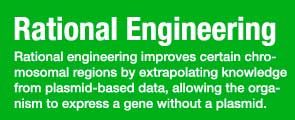Team:UC Davis/Project/Strain
From 2012.igem.org
(Difference between revisions)
| Line 364: | Line 364: | ||
#newnavi .newmenu li:hover ul li a:hover { | #newnavi .newmenu li:hover ul li a:hover { | ||
background: #05bcea; color:#ffffff; width:150px; | background: #05bcea; color:#ffffff; width:150px; | ||
| + | } | ||
| + | |||
| + | |||
| + | #newnavi .newmenu li ul li ul { | ||
| + | height:40px; | ||
| + | left:299px; | ||
| + | top:-26px; | ||
| + | margin: 0; | ||
| + | padding: 0; | ||
| + | list-style: none; | ||
| + | width: 150px; | ||
| + | position:absolute; | ||
| + | display:none; | ||
| + | } | ||
| + | |||
| + | #newnavi .newmenu li ul li ul li { | ||
| + | position:relative; | ||
| + | background: #05bcea; | ||
| + | width: 150px; | ||
| + | } | ||
| + | |||
| + | #newnavi .newmenu li ul li ul li a { | ||
| + | |||
| + | padding:5px 0px 5px 0px;display:block; font-size:12px; width:100px; text-indent:10px; color:#444; | ||
| + | background-color: #05bcea; text-decoration:none; | ||
| + | } | ||
| + | |||
| + | #newnavi .newmenu li ul li:hover ul { | ||
| + | display:block; | ||
| + | color:#ffffff; | ||
| + | width:150px; | ||
| + | background:transparent; | ||
| + | } | ||
| + | |||
| + | #newnavi .newmenu li ul li:hover ul li { | ||
| + | top:-25px; | ||
| + | left:150px; | ||
| + | margin-bottom:-1px; | ||
| + | height:26px; | ||
| + | } | ||
| + | |||
| + | #newnavi .newmenu li ul li:hover ul li a { | ||
| + | |||
| + | padding:5px 0px 5px 0px;display:block; font-size:12px; text-indent:10px; color:#444; | ||
| + | background-color: #05bcea; text-decoration:none;border:0px solid; | ||
} | } | ||
| Line 1,017: | Line 1,062: | ||
<li ><a href="https://2012.igem.org/Team:UC_Davis/Project">Project Overview</a></li> | <li ><a href="https://2012.igem.org/Team:UC_Davis/Project">Project Overview</a></li> | ||
<li ><a href="https://2012.igem.org/Team:UC_Davis/Project/Catalyst">Modular Engineering</a></li> | <li ><a href="https://2012.igem.org/Team:UC_Davis/Project/Catalyst">Modular Engineering</a></li> | ||
| - | <li ><a href="https://2012.igem.org/Team:UC_Davis/Project/Strain">Chassis Engineering</a></li> | + | <li ><a title="https://2012.igem.org/Team:UC_Davis/Project/Strain">Chassis Engineering</a> |
| + | <ul> | ||
| + | <li><a href="https://2012.igem.org/Team:UC_Davis/Project/Strain">Chassis Engineering</a></li> | ||
| + | <li><a href="https://2012.igem.org/Team:UC_Davis/Project/Directed_Evolution">Directed Evolution</a></li> | ||
| + | <li><a href="https://2012.igem.org/Team:UC_Davis/Project/Our_Strain">Rational Engineering </a></li> | ||
| + | </ul> | ||
| + | </li> | ||
<li ><a href="https://2012.igem.org/Team:UC_Davis/Project/Protein_Engineering">Protein Engineering</a></li> | <li ><a href="https://2012.igem.org/Team:UC_Davis/Project/Protein_Engineering">Protein Engineering</a></li> | ||
<li ><a href="https://2012.igem.org/Team:UC_Davis/Parts">Parts</a></li> | <li ><a href="https://2012.igem.org/Team:UC_Davis/Parts">Parts</a></li> | ||
| Line 1,181: | Line 1,232: | ||
<br>Our main goal is for the E. coli to be able to live off PET as the sole carbon source. In order to do this, it must be able to sequester the carbon into its metabolism. In the diagram below, the ethylene glycol binds to the glycolaldehyde reductase to form glycolaldehyde. After, the glycolaldehyde attaches to the glycolaldehyde dehydrogenase to form glycolate. The glycolate goes in to the metabolism via further reactions with glycolate dehydrogenase and malate synthase. The (S)-malate is the final product that is incorporated in to the citric acid (TCA) cycle. As the citric acid cycle propagates, more energy is made for the cell, allowing growth and self-sufficient development on PET. | <br>Our main goal is for the E. coli to be able to live off PET as the sole carbon source. In order to do this, it must be able to sequester the carbon into its metabolism. In the diagram below, the ethylene glycol binds to the glycolaldehyde reductase to form glycolaldehyde. After, the glycolaldehyde attaches to the glycolaldehyde dehydrogenase to form glycolate. The glycolate goes in to the metabolism via further reactions with glycolate dehydrogenase and malate synthase. The (S)-malate is the final product that is incorporated in to the citric acid (TCA) cycle. As the citric acid cycle propagates, more energy is made for the cell, allowing growth and self-sufficient development on PET. | ||
| - | <br><center><a href="https://static.igem.org/mediawiki/2012/f/f8/UCD_figure-2-large.jpg" class="lightbox"><img src="https://static.igem.org/mediawiki/2012/c/c0/UCD_figure-2-b.png "> </a> </center> | + | <br><br><center><a href="https://static.igem.org/mediawiki/2012/f/f8/UCD_figure-2-large.jpg" class="lightbox"><img src="https://static.igem.org/mediawiki/2012/c/c0/UCD_figure-2-b.png "> </a> </center><br> |
Revision as of 22:53, 17 September 2012

Background
Rationale
Our main goal is for the E. coli to be able to live off PET as the sole carbon source. In order to do this, it must be able to sequester the carbon into its metabolism. In the diagram below, the ethylene glycol binds to the glycolaldehyde reductase to form glycolaldehyde. After, the glycolaldehyde attaches to the glycolaldehyde dehydrogenase to form glycolate. The glycolate goes in to the metabolism via further reactions with glycolate dehydrogenase and malate synthase. The (S)-malate is the final product that is incorporated in to the citric acid (TCA) cycle. As the citric acid cycle propagates, more energy is made for the cell, allowing growth and self-sufficient development on PET.

 "
"












